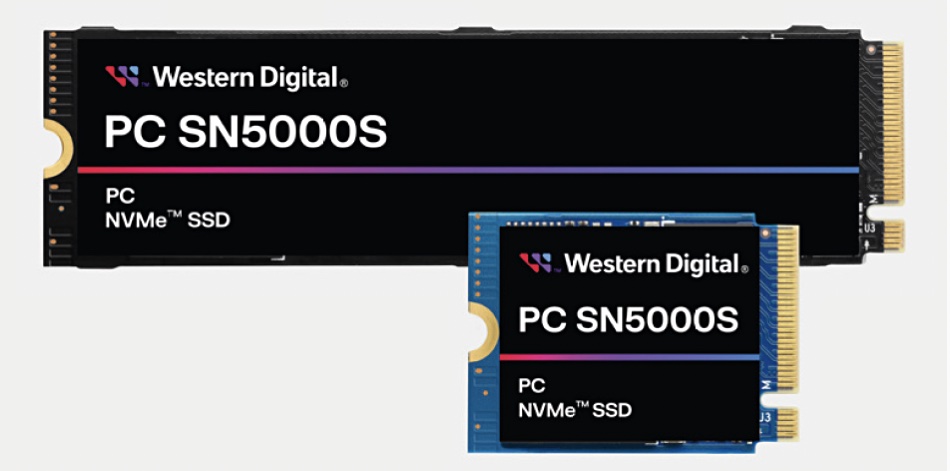Like Solidigm, Western Digital claims its QLC gumstick flash can replace TLC flash and, in fact, is better than the SN740 TLC drive it’s replacing.
Update. BiCS6 NAND has 162 player, not 176 as originally stated here. 21 June 2024.
QLC (4bits/cell) flash drives are inherently slower to read and write data than TLC (3bits/cell) flash and have a shorter raw endurance before they wear out. Equipping them with a fast pseudo-SLC (1 bit/cell) cache, over-provisioning of raw cells and a controller that reduces write amplification can overcome these disadvantages. Both of these drives are for OEM laptop and desktop PC builders, and WD has not announced them to the press generally – meaning no exec quotes to extol their qualities.

The older drive is made from 112-layer 3D NAND – WD and Kioxia’s fifth generation BiCS technology – with the newer SN5000S fabricated from the later BiCS 6 generation 162-layer NAND.
The SN740 is an M.2 format flash card (2230, 2242, 2280) with 256GB, 512TB, 1TB and 2TB capacities. The new SN5000S drops the entry-level 256GB capacity and the 2242 M.2 variant but otherwise has the same formats. It has no on-board DRAM, relying on the host’s memory. The main difference between the drives lies in their performance and a table shows this:

Random read IOPS increases by 1.4 percent while random write IOPS goes up 12.5 percent, due to the SLC caching. Sequential reads are done 16.5 percent faster with sequential writes 15.5 percent quicker.
Endurance increases as well. The SN740’s endurance numbers were 200 terabytes written (TBW) for the 256TB capacity option and then 300TBW, 400TBW and 500TBW as capacities rose through 512GB and 1TB to 2TB. The equivalent SN5000S numbers are 512GB – 150TBW, 1TB – 300TBW, and 2TB – 600TBW; they start lower but rise faster to a 20 percent longer lifespan for the 2TB SN5000S model.
The SN750’s peak active power use is 6.3W for the 2TB device, while the SN5000S uses 6.0W – a tad better. The SN5000S has RSA-3K and SHA-384 encryption, and TCG Opal 2.02 and Pyrite security capabilities.
As these drives are for OEMs there are are no publicly released prices.







